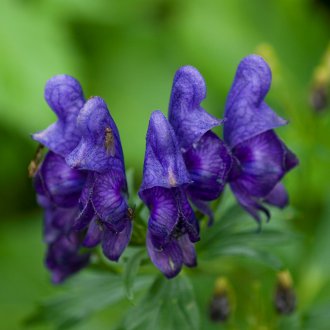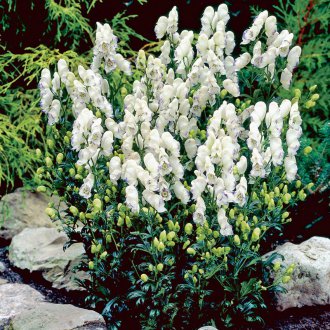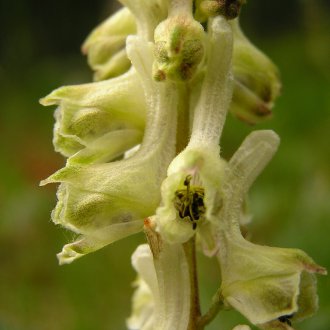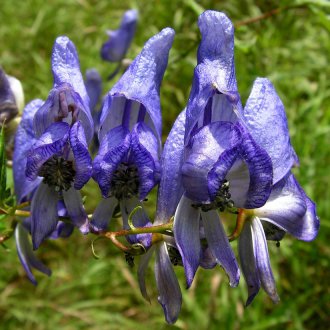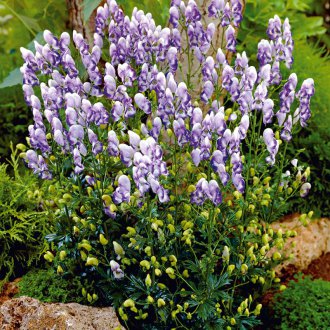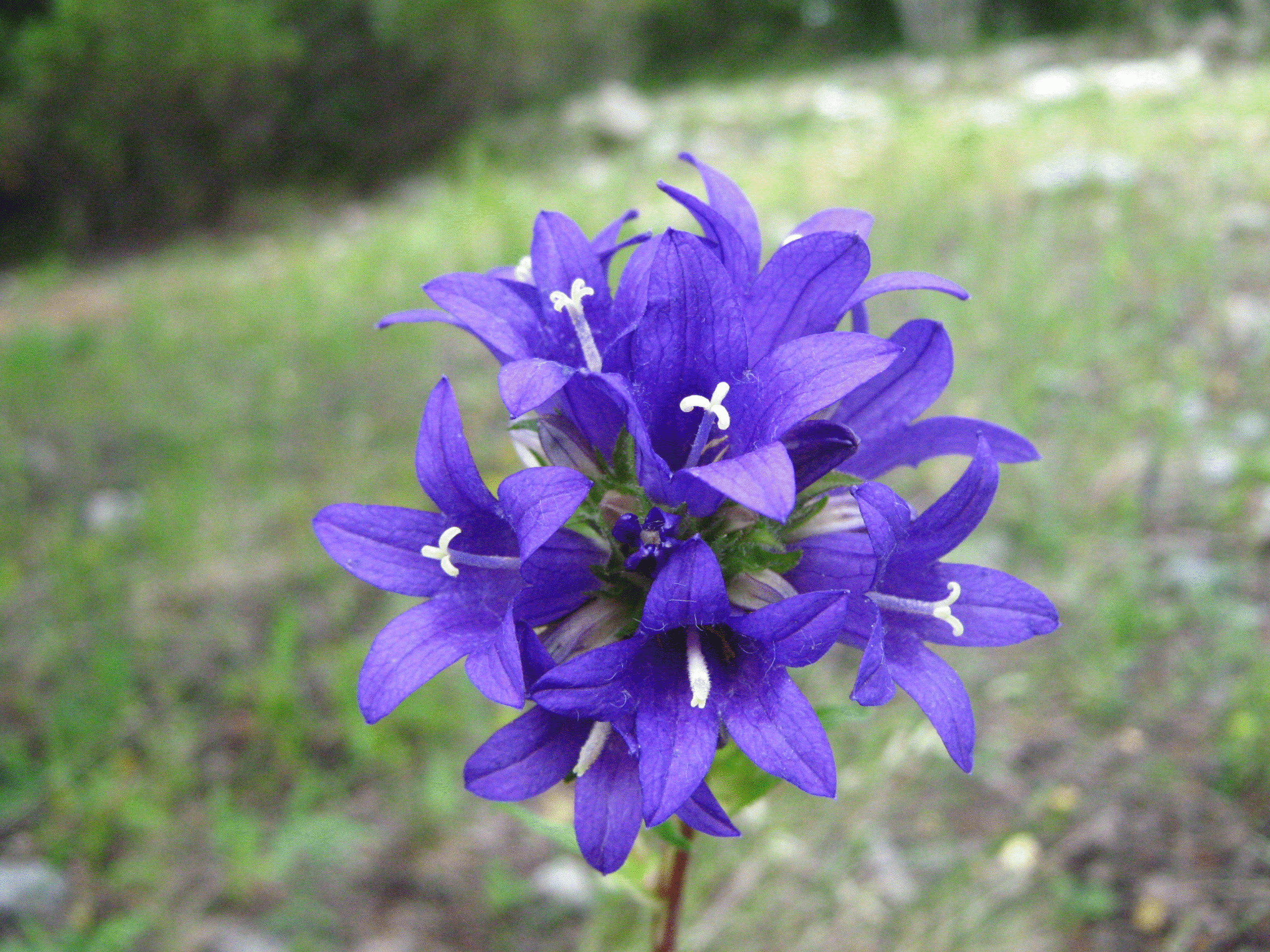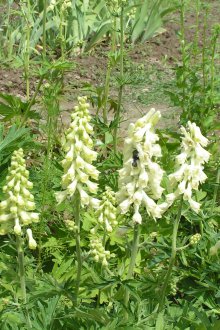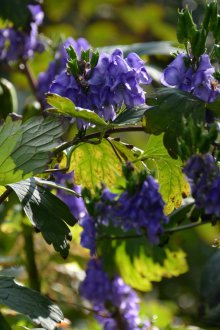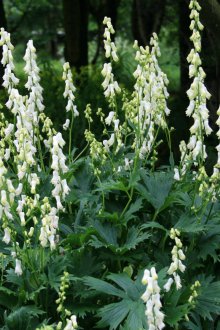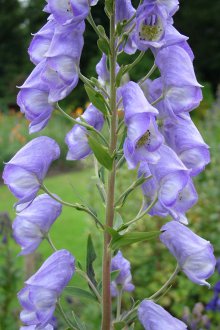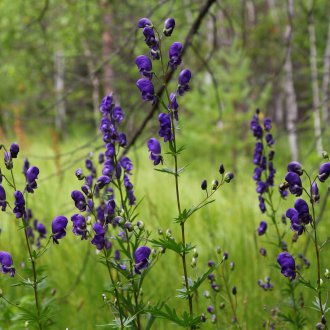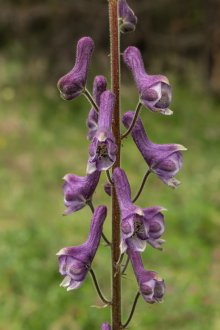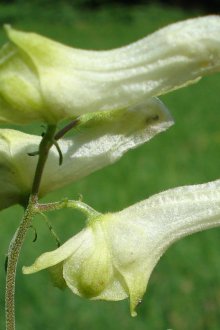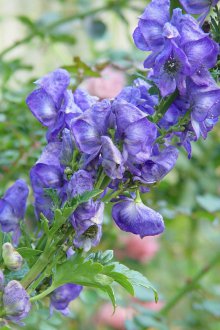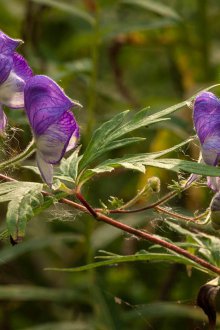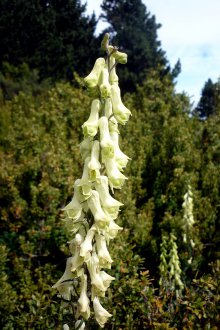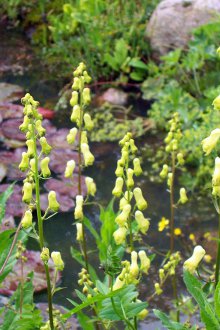Aconite - a beautiful plant with a mythological history (23 photos)
Content
Aconite (in common people - a wolf root, buttercup, wrestler) belongs to the family of buttercups. Translated from Greek, the name of the flower means "rock, cliff." The plant gained fame in ancient times (the history of the occurrence is described in ancient Greek and Scandinavian mythologies). There are about 330 species of aconites, with approximately 70-75 preserved in their natural form. Plants are perennials and are able to grow to a height of 260 cm. The flowers grow irregularly shaped and collected in inflorescences (some reach a length of about 50 cm).
Types of aconites
To decorate the suburban area and create picturesque flower beds, many species of this plant are used. The most popular are several varieties.
Aconite napellus can be attributed to a complex species, since it combines several small subspecies. Garden variety (A.napellus) with blue flowers is the most popular in central Europe. Hard aconite (A. firmum) and low aconite (A. namum) are planted in the Carpathians, and dense (A. compactum) in the Alps. The wrestler A.napellus L is very widespread, whose stems grow to a height of 1.3 m. The plant is formed in the form of a pyramidal bush, has dense leaves of a deep dark green hue. The flowers form dense blue-violet or blurry blue inflorescences about 10 cm long. Flowering time begins at the end of June and lasts 30-40 days. An important advantage of the garden variety - no shelter for the winter is required. A rich variety of species with flowers of a wide range of shades allows the use of these plantings for multi-colored design of garden areas. You can highlight “Carneum” - flowers with pinkish-beige shades, “Eleonora” - the edges of the white petals have a red border, “Rubelum” stands out with a palette of pinkish tones, “Schneewitchen” is notable for snow-white flowers.
Motley aconite is widespread in the European part of Russia, Northern Europe. This perennial plant can grow up to 150 cm. Flowers in loose racemose inflorescences have a blue or dark blue color. The flowering period begins in mid-July and lasts about 30 days.
Aconite Fisher in the natural environment grows in deciduous and mixed forests of the Far East. This perennial plant can reach a height of 1.6 m. In the fall, additional tubers are formed. The stem of the plant is strong, round and straight. The inflorescence blooms from July to October, forming a rare brush of saturated blue, sometimes white shades.
Aconite curly is worth highlighting separately. This variety is known for its picturesque and decorative appearance. Climbing stalk is able to grow in height by more than 2 m, relying on neighbors in the site. Shiny leaves of dissected forms grow 3-10 cm long and 5-15 cm wide. The flowers have a dark lilac or lilac-green color and are 2-3.5 cm long. The inflorescence blooms from the end of July and forms a brush or whisk 13 -20 cm. Elegant flowers adorn the site throughout August.
Features of breeding, rules of care
When working with plantations, gloves must be used, since this plant is poisonous (especially tubers, flowers and seeds). After contact with aconite, it is recommended to wash your hands with soap.
Breeding methods
Before planting plants on a new site, it is recommended to prepare the land. For this, the soil is loosened. On heavy clay soils, it is desirable to provide natural drainage by adding sand. To create conditions for better growth, humus is added.
When planting, seeds can be sown immediately in the soil (it is recommended to use only freshly collected samples). Sometimes seedlings can appear in a year, therefore, to prevent a similar situation, stratification is carried out. Seeds are sown before winter in a special container and left in a cool place until spring. In early April, the box is brought into a warm room for germinating sprouts.
As soon as 2 leaves are formed on the seedlings, then the plants can be dived right away, keeping a distance of 10 cm between them. .
You can use other methods of plant breeding:
- division of bushes, which is best used for plantations of four years of age. This method can be applied in early spring, and at least 2-3 buds should be preserved on each separated plant. When planting, make sure that the three-centimeter layer of earth covers the root neck;
- cuttings can propagate plants from the end of May. With this method, the shoot with the heel is cut from the stem, and then rooted in the greenhouse. The requirements for seedling care are primitive - watering and airing.
Growing recommendations
Landing and care do not take much time, since aconite does not require constant attention or special service rules and can withstand the winters quite confidently, although, to be safe, you can cover it with lapnik. Since the flowers open alternately, the wilted petals are cut to maintain a beautiful and well-groomed general appearance of the plantings. Two varieties of plants are most in demand:
Aconite napellus
This variety in care does not cause difficulties - light periodic fertilizing with fertilizers (mineral and organic), loosening of the soil and mulching are necessary.
In the dry period of summer, more active watering of the plantings is required, since strong drying of the land should not be allowed.
The wrestler annually grows on daughter tubers (from three to four pieces), therefore, in order to prevent crowding, the plant is planted, and it is recommended that the old tubers be thrown out. It is advisable to conduct such an audit once every four years.
Curly Aconite
For the normal development and growth of this plant, simple twine tied up vertically is not enough. The optimal solution is a coarse mesh or trellised pergola, which is set for powerful climbing plants.
During growth, aconite does not show strong activity, so if there is no desire to equip special structures, you can plant it next to some tall shrub. This plant will not cause any harm to its neighbor. But thanks to the long flowering period (about a month), the natural effect of a constantly flowering shrub is created.
The plant is not picky in the choice of soil, grows well in shaded areas, so it easily takes root in the shade of trees. Planting in areas of constant light can lead to burns of leaves on bright cloudless summer days.
Watering and dressing rules
Any soil, with the exception of rocky and sandy ones, is suitable for normal plant growth. The main requirement for land is good breathability and the ability to retain water. To preserve moisture and loose soil, it makes sense to sprinkle the earth with the tubers of the plant or use a special mulching composition (peat with sawdust).
During flowering or in the arid period of summer, more active watering of the plantings is required; strong drying of the earth should not be allowed.However, care must be taken to avoid fluid stagnation near the roots. Since leaves can become black from excessive moisture, which will lead to the death of the plant.
When growing aconites on open ground, fertilizing the earth is carried out in several stages:
- in early spring, organic solutions are used: 2 liters of slurry are dissolved in 10 liters of water;
- during the formation of inflorescences they use nitroammophos - 40 g of the drug are dissolved in 10 liters of water;
- phosphorus-potassium top dressing is used directly during the flowering period.
If top dressing is applied to the soil in a dry form, then the area near the roots is then necessarily watered.
Plant diseases
This flower is quite resistant to disease. However, difficult weather conditions or violations of the rules of courtship (excessive fertilizer with nitrogen compounds) can cause the appearance of powdery mildew. The method of treatment is the elimination of damaged leaves and the treatment of the site with fungicides. If you do not want to resort to chemistry, then you can try to spray the plants with milk serum or infusion of wood ash, aged three days.
As a preventative measure, the site should be watered in the early morning so that the soil has time to dry out during the day and the tubers do not remain wet on a cold night.
Of the insect pests, the plant is affected: aphids, spider mites, canola beetle. You can scare off aphids and spider mites by spraying plants with onion infusion.
And to prevent the spread of rapeseed flower beetle, you can use mixtures with organophosphorus compounds.
As a preventive measure, regular soil loosening is recommended, as the pest pupates in open soil. It is especially important to carry out these preventive measures in autumn (to prevent the wintering of insects) and spring (to stop the development of larvae).
Aconite will adequately decorate any garden thanks to not only exquisite flowers, but also large carved leaves. Its planting next to perennials having other forms of buds and shades (peonies, daylilies) will emphasize the exquisite beauty of aconite flowers.
Tall plant varieties can be used in different ways in the decor of a garden plot:
- aconite perfectly decorates the centers of round flower beds. This perennial will also serve as an elegant background for stunted flowers in plantings near hedges, walls, fences;
- richly green and carved foliage is able to decorate the walls of utility buildings or old structures. A similar technique will bring to the site the charm of rural naturalness.
The winding varieties of this garden perennial harmoniously decorate the walls of arbors, terraces. It is possible to unconventionally and creatively zonify a plot using a green screen created on trellises.
The combination of unpretentious plants and proper care will ensure aconite plantings a long life. Using creative ideas will help to create a unique design of the site that will delight the owners and pleasantly amaze the guests.
